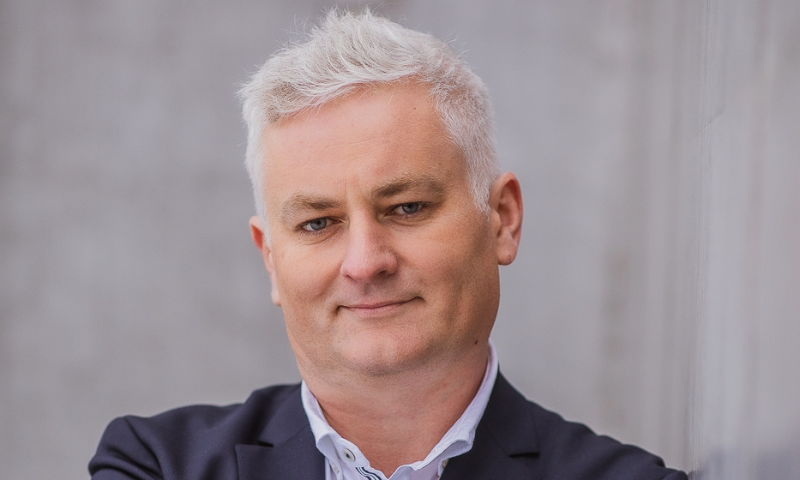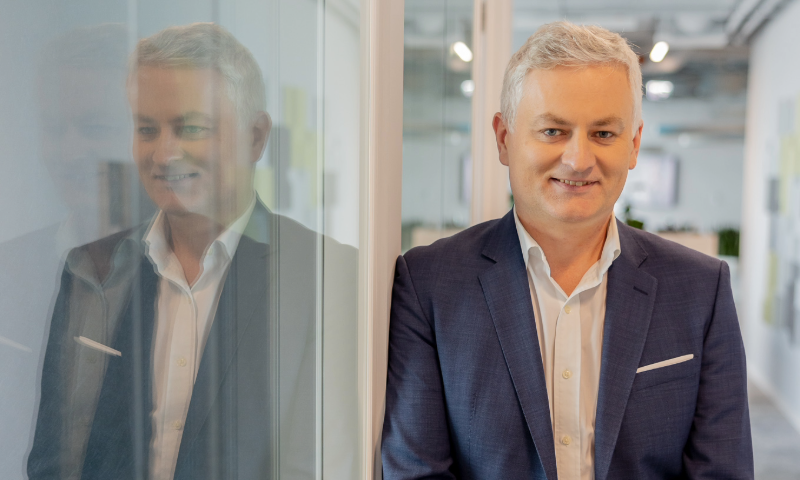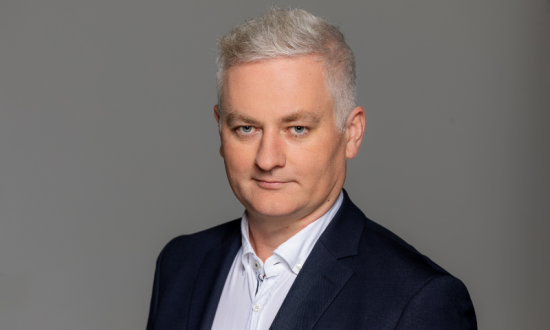Piotr Sankowski is a professor at the Institute of Informatics, University of Warsaw. He also received a doctorate in physics at the Polish Academy of Sciences. His research interest focuses on practical application of algorithms, ranging from economic applications, through learning data structures, to parallel algorithms for data science. During his career he received 4 ERC Grants. He is a president of IDEAS NCBR – a R&D centre operating in the field of artificial intelligence. Member of ELLIS Society and ELLIS Unit Warsaw. Piotr Sankowski is also a co-founder of the spin-off company MIM Solutions.
Recently, in an exclusive interview with Digital First Magazine, Piotr shared his professional trajectory, the inspiration behind establishing IDEAS NCBR, significant career milestones, future plans, pearls of wisdom, and much more. The following excerpts are taken from the interview.
Hi Piotr. Please tell us about your background and areas of interest.
I received my Ph.D. in computer science in 2005 and Ph.D. in physics in 2009. I completed post-doctoral internships at the Swiss Federal Institute of Technology in Zurich and at the Sapienza University in Rome.
My scientific interests focus on the practical applications of algorithms, ranging from economic applications to learning data structures and parallel algorithms for data science. Due to this background, I was looking for a research topic that would combine these areas, and only recently I have found an inspiring one, i.e., AI for solid state theory. The challenge was that in computer science, we are used to understanding everything and having everything add up. However, in physics, we often don’t understand much. For instance, I remember an exam where we were given a task with no solution. Everyone was struggling with a differential equation, slightly modified with additional assumptions, and had absolutely no chance. Exactly, this is where AI can help.
Furthermore, the educational paths in both fields are quite different. Computer science and artificial intelligence are newer fields and usually don’t require vast amounts of knowledge to get started; the entry threshold is different. In contrast, physics builds understanding on many levels of previous discoveries. For example, it takes until the fourth year of studies to reach the second quantization and only then can one start to understand Richard Feynman’s famous works.
Physics also has a different research methodology. The concept of complex systems is ubiquitous. We understand the basic physical laws and the interactions of individual particles, but when it comes to calculating something like the “three-body problem”, things get more complicated. And when dealing with systems containing hundreds of thousands of elements, we humbly accept that not everything will be clear or accessible. This humility towards complexity can be a great advantage in artificial intelligence research, especially now that we have moved from classic algorithms to extremely complex “black boxes” like generative models.
What was the inspiration behind establishing IDEAS NCBR? What sets it apart from other market competitors?
The inspiration behind establishing IDEAS NCBR was to create a unique institution in Poland that not only educates a new generation of AI experts but also conducts groundbreaking research with a tangible impact on both the Polish and global technological landscape. We aim to bridge the gap between academia and business, fostering innovation and practical applications of AI. At IDEAS NCBR, we have set ambitious goals: educating new experts in AI, conducting high-level international research, and creating a platform for collaboration between academia and industry. Our institution stands out because of this holistic approach.
We currently have 4 research groups focusing on algorithmics, cryptography, computer vision, and computer graphics. Additionally, we have 12 research teams working on various projects, including AI in the security of critical infrastructure, large language models, and precision forestry. Recently, we have established teams dedicated to supporting neurodiversity diagnostics and robotics through AI. Our progress is evident. Although it often takes time from team formation to achieving success, we have already initiated several projects with commercial potential, which we hope will lead to the creation of spin-off companies and innovative products.
IDEAS NCBR currently employs more than 100 researchers, including over 40 PhD candidates. Our researchers have had their work accepted at prestigious conferences in AI and cryptography, such as NeurIPS, ICLR, IJCAI, WACV, and Crypto.

You are a Chief Scientific Advisor at MIM Solutions. Can you please tell us about this platform and your role in it?
MIM Solutions is an AI software house where we typically support the development of core technologies for other companies and start-ups. My role involves the scientific supervision of several of these projects and working on the long-term vision for research and development within the company. In particular, I am involved in setting up new projects and assessing their feasibility.
As a leader, what approaches do you use to create a culture of experimentation and innovation within your team?
First of all, we needed to set up a process of recruiting brilliant and creative people. This requires both transparency and visibility. Once they start, we provide them with the environment, resources, and freedom to do their best work. We empower the scientists to take the lead on their projects. We evaluate personnel using methods that do not overly emphasize short-term impact or simple metrics, such as the number of publications. Innovation cannot be planned with strict milestones. Breakthroughs require freedom and patience.
What has been the most fulfilling part of your career?
This is a hard question, and I cannot name just one thing. There are at least two that are very fulfilling.
Firstly, seeing high-risk research being transformed into implemented projects that create value for a company. Despite being R&D oriented, MIM Solutions’ growth was recognized in Deloitte Technology Fast 50 Central Europe 2023 ranking.
Secondly, setting up a stimulating environment that enables young researchers to excel in their work – IDEAS NCBR runs a nationwide PhD program in AI.
What are your valuable learnings and un-learnings during your journey to a visionary leader?
This might sound trivial, but for a tech geek, it took me some time to realize how important it is to be a part of a community. Acting within a supportive network, one can accomplish things faster and easier. As someone who is not the best at meeting new people, I had to find efficient ways to make meaningful connections. I accomplished this by leading various meetings and initiatives within organizations where I worked or studied. As for unlearning, I think that in the past I often focused too much on some technological improvements without seeking immediate feedback from the market.

In your words, tell us the leadership skills that everyone should learn?
I think that I am very good at long-term planning and executing complex tasks. This requires foreseeing various risks and hedging against them. Furthermore, it demands consistency and the ability to wait for, identify, and exploit opportunities.
What is that one thing which motivates you to become better and better every day?
This is strongly linked to the previous question. I visualize long-term goals, and if reaching them requires improving some skills, I start working on them. Understanding one’s weak points, such as being poor at making contacts, allows one to turn them even into an advantage by finding the right approach.
Where do you see yourself in the next 5 years?
This question probably comes at the wrong time, as I see several pathways ahead of me right now. The challenge is that all of them are both challenging and potentially very fulfilling. Nevertheless, all these options are related to how research will be transformed by AI. We are currently at a turning point where we need to prepare for a future in which a significant portion of science will be conducted by creative machines.
What is a piece of career advice you have been given that you would pass on to others?
When I received this advice, I realized that this is exactly what I was already doing. When you notice something important to you is not working well, take the initiative to improve it and do not ignore it. You will be surprised at how often you succeed in making the change.






